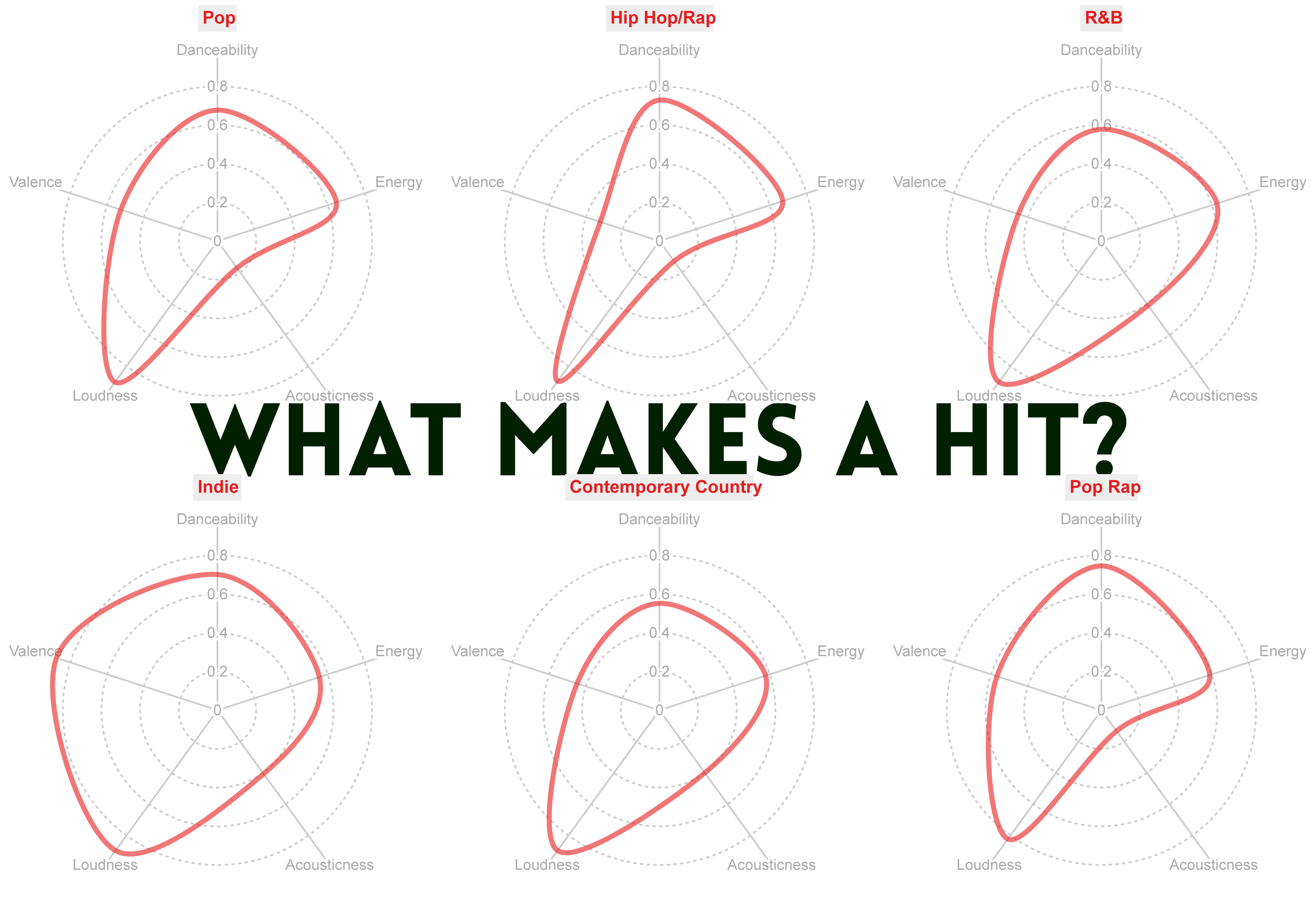Thirty-three tracks have breached the top 10 on the Billboard Hot 100 chart so far this year. Though they range from trap to pop anthems to Beyoncés foray into country, the songs share key similarities— they’re loud, moderately uptempo, and tend to avoid acoustic elements.
Spotify measures and tags tracks based on a variety of features like duration, key, and certain audio features. Capital News Service analyzed the top songs of 2024 focusing on five features: energy, which measures how upbeat and dynamic a song is, danceability, which measures how consistent the beat is, valence, which measures how happy or sad a song sounds, loudness and acousticness.
One thing all charting tracks shared regardless of genre was a high loudness score. Measured on a scale from 0 to 1, the average loudness score of a top-charting 2024 Billboard Hot 100 track was .9. Most songs also hold moderate scores for danceability and energy, keeping things catchy enough to bring listeners back, but not high-strung enough to discourage everyday background listening.
“Taylor Swift has written 30 or 40 songs using the Pachelbel canon chord progression, right? Because Western audiences are primed to react emotionally to that chord,” said music culture expert and American University communication professor Aram Sinnreich. “Feeling comfortable, anticipating where a song is going is one major ingredient in a hit.”
We see variation in features by genre but within their respective groups, songs share similarities. A pop song can be easily identified as a pop song from its steady, easy-to-dance-to beat and a rigid structure of verses and choruses. This translates into the audio metrics— looking at the graphs below of various high-charting pop songs, there is a similar bean-like shape indicating high danceability, valence and loudness with a distinctly negative acousticness stat.
Whereas with hip-hop and rap songs on the chart, the acoustic score is still low, but the valence also tends to be low, creating more of a shark tooth shape. Due to the repetitive loops in hip-hop backing beats, the danceability statistic is also higher in rap songs.
While rap and hip-hop have been popular in the mainstream for the last few decades, the charts have seen a transition away from pop rap– rap that follows the verse-chorus structure and has similar instrumentation to pop, like the work of Nicki Minaj or Drake– and into trap and sample-heavy hip-hop. So far this year, eight out of the 33 top-10 tracks are classified as trap on Spotify, where only three of 33 are considered pop rap.
There has also been a resurgence in popularity for R&B, which notably made waves in the ‘90s and early 2000s with Destiny’s Child, Usher, Alicia Keys and more, and is coming back now with artists like Tyla and SZA, whose 2022 track “Snooze” is still charting high a year and a half post-release.
In addition to a relaxing of sampling and copyright laws, Sinnreich believes this rise in sample-heavy hip-hop can be attributed to a mass nostalgia for ‘90s rap acts like A Tribe Called Quest and N.W.A., who, in addition to using samples to build their songs also had heavy political messaging in their music.
“Sample-driven hip-hop has come to reoccupy the role that it did play in the early ‘90s as this Afrocentric aesthetic in a way that aligns with Black Lives Matter and with the current civil rights movements,” he said. “Of course, it’s got to filter into pop because the job of the major labels is to keep their ears on the ground and hear what’s coming, and then create a palatable version of it that everybody can get behind. And, you know, I think SZA and 21 Savage fit that bill.”
Some charting tracks don’t necessarily follow a formula. “Fast Car” by Luke Combs, a cover of the 1988 Tracy Chapman hit, carries a cultural significance as Chapman was the first Black songwriter to win a Country Music Award, and as Combs, a mainstream artist, chose to cover the work of a Black LGBTQ+ woman. Tracks from Beyoncé’s COWBOY CARTER like “JOLENE” and “TEXAS HOLD ‘EM” subvert the norms of both popular R&B and contemporary country, creating a sound completely different from other songs topping the charts.
This doesn’t necessarily mean that formulaic, catchy hits have less artistic value. Sinnreich believes there is an art to tailoring one’s creativity to appease the masses.
“I think artistry is the act of negotiating between your inner voice and what the world sees when they look at you, and working within the confines of the industry and the society and the technology that you are saddled with to make something meaningful,” he said. “Even the cheesiest, corniest pop hits are works of art.”

